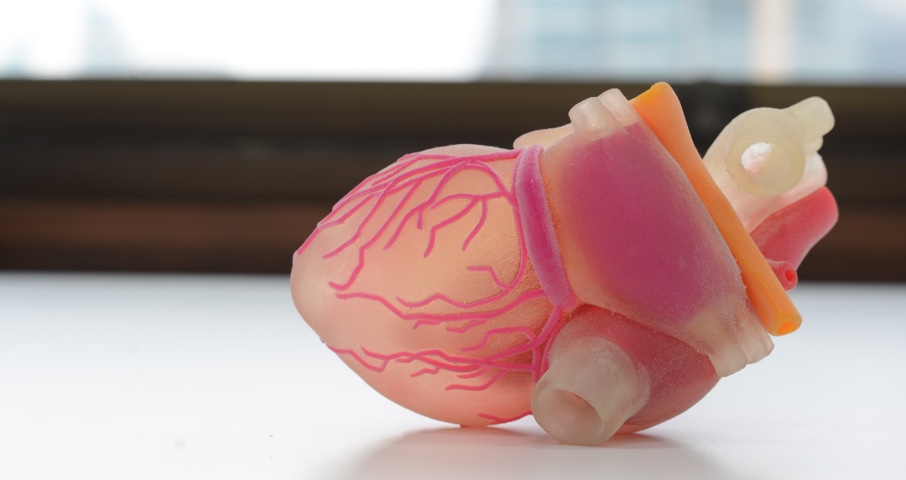



Get new exclusive access to healthcare business reports & breaking news




Biolife4D, a Chicago-based biotech startup, announced that it can bioprint human cardiac tissue.
In recent years, the global medical community has turned its attention to the 3D bioprinting market, which holds promise in cracking the code of successful organ transplants.
This week, a Chicago-based company just got closer to this elusive goal.
Biolife4D, a biotech startup, announced that it can bioprint human cardiac tissue. More specifically, the Biolife4D scientists printed a human cardiac patch, containing the multiple cell types comprised in the human heart. Not only that, but they managed to keep the patch alive after bioprinting it.
The entire process is highly complex. It involves reprograming a patient’s blood cells back into stem cells, which are then mutated to produce the specific types of cells suitable for the 3D bioengineering of a human heart.
Although other companies have made similar patches, none have quite figured out the perfect combination of cells. “You can think of it like this is the first time all of the proper ingredients were used to properly make the recipe,” said Steven Morris, CEO of Biolife.
Watch this video to see how the scientific landmark was achieved.
It might take years, or even decades, to perfect the technology to print fully functioning organs and put an end to those long donor waiting lists. Still, this medical breakthrough represents the beginning of a new health-tech era. The race for finding the Holy Grail of the human organ transplant now feels more real than ever. That feeling is backed by numbers: the global 3D bioprinting market is expected to reach a whopping $2.6 billion by 2024.
The potential for 3D bioprinting to disrupt the healthcare system and its applications goes beyond organ and tissue printing. Currently used to print medical instruments and implants, it is soon expected to penetrate the pharmaceutical industry and curb animal testing. In preclinical trials, replacing animal tissues with human 3D bioprinted ones, such as liver or kidney tissues, would speed up drug discovery and make treatments more affordable. Plus, a growing number of patients have already received ‘simple’ body parts that have been created by a 3D printer, including skin, jaw bones, noses or ears. Other applications for this technology have also started to pop up. For example, cosmetic companies have begun testing 3D printing solutions.
The good news is that you don’t have to be a medical research giant to reap the benefits of this trend.
A good example is Biolife4D. The company, though small, achieved all its scientific breakthroughs with a great deal of outside-the-box thinking. The last part involved organizing an equity crowdfunding event that helped them raise over $1 million from sold stock.
Now the company is looking at even bigger financial gains. The startup’s technology, if successful, could one day be used to help treat patients who have suffered acute heart failure. This is a multibillion-dollar industry: one in five adults will develop heart failure after the age of 40, according to the American Heart Association.
Whatever the focus of your healthcare business may be, there is at least one way to get involved in this fast growing trend. Get a sense of the industry by starting small. Attend summits on the subject where you can meet like-minded healthcare professionals and investors. You can also send your staff to informal meet-ups.
It doesn’t hurt to listen to what skeptics have to say. The prospect of replacing human organs with 3D printers has raised a torrent of ethical and regulatory concerns. Some question whether replacements of 3D printed parts will prove to be harmful in the long-run. There are also fears surrounding the emissions a printer releases in the surgical theater during surgery.
Several now-accepted massive medical advancements, though, started as flawed prototypes.
For example, when first introduced, stem cells raised many ethical questions because they had to be extracted from human embryos left over from assisted reproduction attempts, such as in vitro fertilization. Nowadays, doctors use stem cells taken from bone marrow or blood in transplant procedures to treat countless diseases, from Parkinson’s and Alzheimer’s to spinal cord injury, stroke, burns and heart disease.
As technology evolves, it is crucial for researchers worldwide to educate the public on the importance of pushing the envelope by seeking out innovative life-saving procedures.